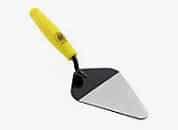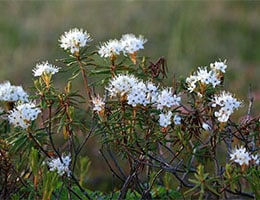 Palustre is a term with two broad meanings according to the dictionary of the Royal Spanish Academy ( RAE ). The term may come from pala or from the Latin word paluster .
Palustre is a term with two broad meanings according to the dictionary of the Royal Spanish Academy ( RAE ). The term may come from pala or from the Latin word paluster .
When trowel derives from shovel , it refers to a tool used by bricklayers. The trowel is a utensil used to manipulate and spread mortar or mortar .
Each trowel has a wooden handle that ends in a triangular metal sheet . The bricklayer takes the device by the handle and inserts the triangular iron into the mixture .
The trowel is also known as a mason's spoon or mason's trowel . The metal sheet can have different characteristics depending on the specific work that needs to be done. In certain cases, the subject can use other tools in addition to the trowel, such as spatulas and trowels .
It is important to clarify that, beyond its usefulness for the construction work itself, the trowel is a safety resource. If the person is forced to touch the mortar with their hands, this prolonged contact can cause skin damage.
The other use of the idea of palustre, which comes from the Latin paluster , is linked to something related to a swamp or a lagoon . It should be remembered that a swamp is an area with a muddy bottom in which water naturally stagnates, while a lagoon is a natural aquatic reservoir smaller than a lake.
It is possible to speak, in this framework, of marsh vegetation , marsh plant , etc. As an adjective , palustre appears in different names.
The reed bunting , for example , is a bird that lives in Asian and European wetlands. Its scientific name is Emberiza schoeniclus .
Marsh buntings belong to the family group of emberizids . This group , in turn, is included in the order of passerines .
 On the other hand, in the field of homeopathy there is a medicine called Ledum Palustre , which is known in everyday speech as Labrador tea and is used in various treatments. Its properties allow us to combat the symptoms of a large number of diseases and that is why it is among the favorite products of homeopaths.
On the other hand, in the field of homeopathy there is a medicine called Ledum Palustre , which is known in everyday speech as Labrador tea and is used in various treatments. Its properties allow us to combat the symptoms of a large number of diseases and that is why it is among the favorite products of homeopaths.
Ledum palustre is the name of the shrub with whose leaves the medicine is formulated. One of the various areas in which it is beneficial is traumatology . For example, in cases of bruises or bruises caused by a blow, homeopathic treatments usually include this plant, especially if the affected area is the eyes or fingers, hands or feet. Likewise, ledum palustre is ideal for healing injuries caused by punctures with sharp objects.
Rheumatological problems can also be treated with ledum palustre. Some examples are pain in the joints and those caused by gout in times of crisis, rheumatism (especially during cold weather, when inflammation and pain increase). Elderly people are especially sensitive to these diseases and that is why this remedy is so effective for them.
We can also use ledum palustre to treat certain dermatological diseases such as rosacea and the pimples it causes on dry skin, wounds, swellings and pain that occur when we are bitten by an insect. In more precise terms, this medicine is usually indicated to combat numbness and the effects of some poisons.
Although it is a natural medicine, the dosage must be indicated by a specialist to achieve the desired results and avoid side effects . For this reason, it is recommended to avoid self-medication in any case.
